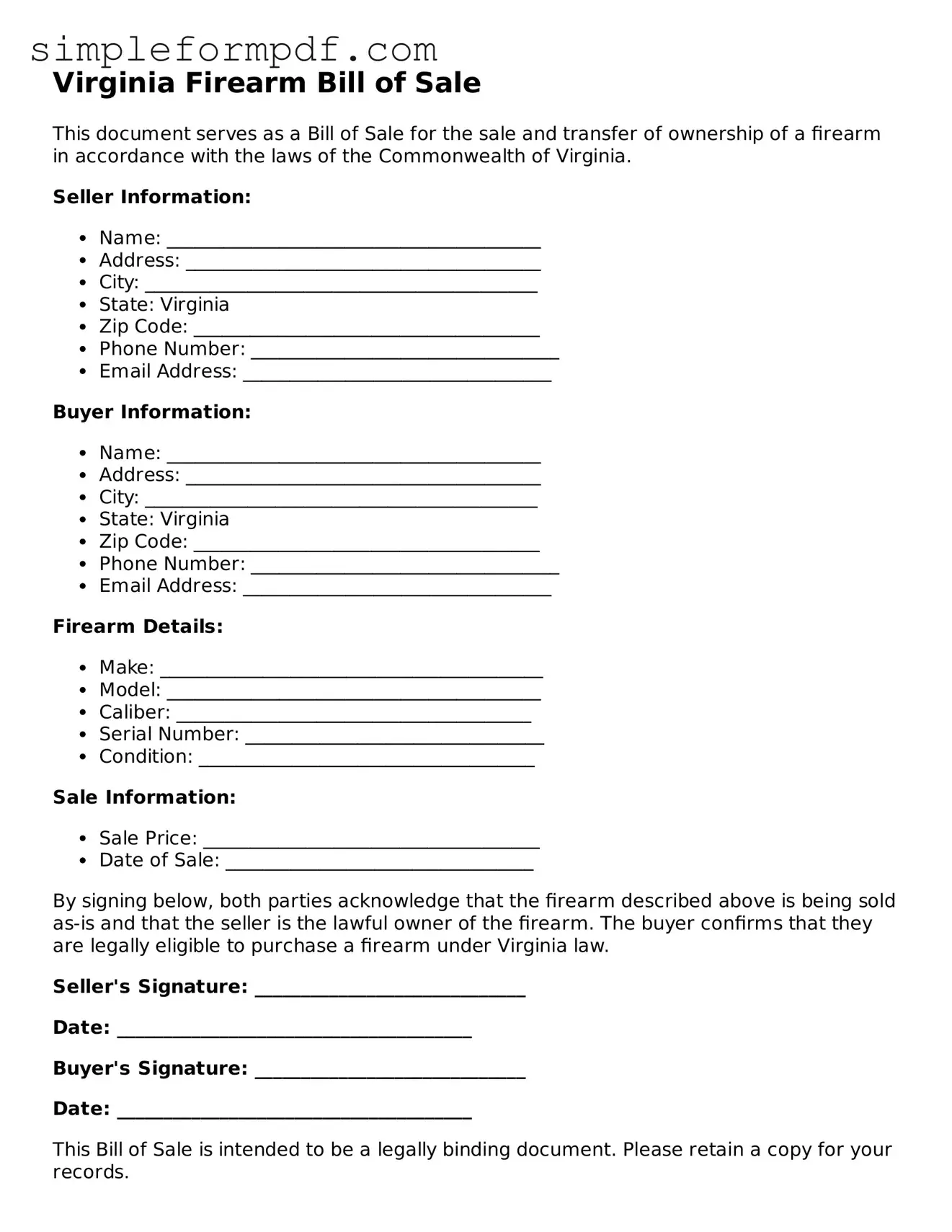Virginia Firearm Bill of Sale
This document serves as a Bill of Sale for the sale and transfer of ownership of a firearm in accordance with the laws of the Commonwealth of Virginia.
Seller Information:
- Name: ________________________________________
- Address: ______________________________________
- City: __________________________________________
- State: Virginia
- Zip Code: _____________________________________
- Phone Number: _________________________________
- Email Address: _________________________________
Buyer Information:
- Name: ________________________________________
- Address: ______________________________________
- City: __________________________________________
- State: Virginia
- Zip Code: _____________________________________
- Phone Number: _________________________________
- Email Address: _________________________________
Firearm Details:
- Make: _________________________________________
- Model: ________________________________________
- Caliber: ______________________________________
- Serial Number: ________________________________
- Condition: ____________________________________
Sale Information:
- Sale Price: ____________________________________
- Date of Sale: _________________________________
By signing below, both parties acknowledge that the firearm described above is being sold as-is and that the seller is the lawful owner of the firearm. The buyer confirms that they are legally eligible to purchase a firearm under Virginia law.
Seller's Signature: _____________________________
Date: ______________________________________
Buyer's Signature: _____________________________
Date: ______________________________________
This Bill of Sale is intended to be a legally binding document. Please retain a copy for your records.
